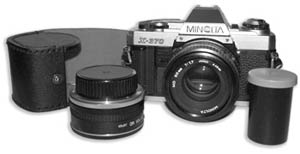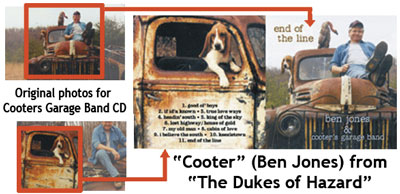|
|
||||||||||||||||||||||||||||||||||
|
|
 |
|
||||||||||||||||||||||||||||||||
|
|
|
|||||||||||||||||||||||||||||||||
|
|
|
|
|
|
||||||||||||||||||||||||||||||
More about Photography and ImagesWhat to Shoot • When to Shoot • For the Photographer • About Digital Camera Files • Photography “Hazards” • Use Glossy Photo Paper • Color or Black & White? • Back to Gathering Components • Also See - More About Text & Info • Specifications What to Shoot
Talk to your designer about what images might be best suited for your project. The graphic artist should be able to offer direction on what layouts will suit your concept the best. Discuss these requests with the photographer and/or have the photographer communicate directly with the designer to ensure capturing the visual elements you desire. If you are going to the trouble of either taking photos, or are hiring someone to take them, then take lots of pictures. Lots and lots of them! You may find the need for the extra photos for other purposes, such as, promo photos, posters or other promotions. Get a wide range of pictures; close-up, full subject, with different lighting, with changes of clothing, at fitting locations, from different angles, with different backgrounds, panoramic shots for backgrounds, some serious and some casual, each individual person… Get the most our of a photo shoot. Weather it is only for this one project or not. We recommend bringing serval changes of clothes to switch into. Also shoot portraits at different locations that fit the "atmospheres" of your project. For CD inserts take portrait photos both with and without an instrument. Get images of the instrument only from near and farther back. When to ShootGet photography guidance from the designer early so you know you have the best images right from the start. This is important because some professional photographers have a waiting list. Photography can usually be done long before deadlines are even a fleeting thought. You can shoot studio portraits anytime, but shooting outdoor photography is best left to a partly cloudy day when the subject will not have to squint their eyes or get bleached out by too much direct sun light. For the PhotographerThe most common difficulty with photography is lack of proper image dimension, like trying to fit a horizontal rectangle photo into the square of a CD cover. See Image Hazards below. Be sure to capture more image area outside of the subject than you think you will need to allow for cropping, bleed and proper dimension fit. When furnishing edited digital files, send along copies of the unedited or the original Raw format digital files on CD whenever possible. When providing prints use glossy paper (5" x 7" or larger). The less changes made to a digital photo the more original detail it will have. A professional graphic artist will be fully capable of touching-up, editing, color correcting and handling adjustments. Shot a wide range of images; close-up, full subject, with different lighting, with changes of clothing, at fitting locations, panoramic shots for backgrounds, from different angles… About Digital Camera FilesMost professional photographers now-a-days have high resolution digital cameras capable of producing clear sharp image files (5 to 10 Mega-Pixel in JPEG or Raw format). However, most consumer base digital cameras generally capture images with too little resolution (file size/detail) to be used for this production process. Yes, even a 3.2 Mega-Pixel digital camera will only capture about 50 percent of the data needed to cover a single CD insert panel of 4.75" x 4.75" at 300 DPI (2100 x 2100 pixels minimum). And many printers are now requesting 400 DPI files! These low resolution image files poorly represent detail and color, and are generally pixilated and blurry. To worsen matters, most use high file compression to store the data which will distort the image and toss out detail even more. Always use the "fine" or "highest quality" settings on any digital camera. However, some of these images can be used for smaller cameo shots or as a small part of a larger collage. If proper digital file size can not be achieved, we recommend shooting film and providing glossy prints to be scanned by the designer (5” x 7” or larger). Photography “Hazards”
Please, remember to back up from the subject in order to capture more image area than you normally would. Photographs are captured in a rectangular format, so if used for a square CD cover, you will end up cropping down from a rectangle to a square, thus trimming off almost one-third off the sides of an image! This additional room leaves space for the artist’s name, project title and printer’s bleed as well. An image with extra area around the subject can always be cropped, but not always extended. Use Glossy Photo PaperUse only glossy photo paper for enlargements (at least 4" x 6" or larger). The alternative to glossy paper is normally called “satin finish”. This low glare finish is achieved by putting the image on a surface which contains tiny little bumps. This microscopic mountain range refracts the glare into smaller pieces and in various directions, thus, reducing its clarity. To the scanner, this creates the illusion that the photograph is covered with small white dots and makes it look as if it is sprinkled with salt or dust. The image’s detail will suffer when these imperfections need to be removed. Get the best quality right from the start. Don’t waste the time and expense of hiring a good photography on a paper that doesn't allow for a crisp clean image capture–ask for the right paper in advance so you don't have to pay for reprinting them. Color or Black & White?We recommend shooting most photos in color. It is relatively easy to make a black and white image (or Greyscale) from of a color photo, however, to make a color photo from a black and white is quite a different story. If it’s certain that the end usage of the image will be black and white, then you might do so, because black and white traditionally contains better contrast if that is the end use. Many professional photographers prefer B&W for that reason. But when in doubt shoot color! Any Other Questions?Just ask… bob@infinity-graphics.com What to Shoot • When to Shoot • For the Photographer • About Digital Camera Files • Photography “Hazards” • Use Glossy Photo Paper • Color or Black & White? • Back to Gathering Components • Return to Top |
||||||||||||||||||||||||||||||||||
|
||||||||||||||||||||||||||||||||||
|
|
|
|
||||||||||||||||||||||||||||||||









